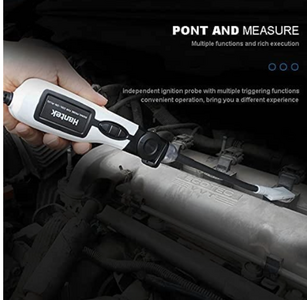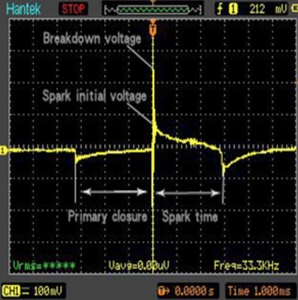You could use one of my LT Kick Panels (I will be making more of them in the near future. But they will be an updated version. Anyway, that positioning looks great.
Im looking forward to it. Do you have any pictures?
Does this sub need to be connected directly to the battery or is the Spyder's fuse box ok?
Got these from googling "passenger footrests", they are all made from aluminum but some kind of thick plastic would probably also work. Gotta protect the speaker but not block the glorious sound. Some passengers like to brace themselves during "spirited driving" - don't know why !?!?
That is a good question. Because it uses a class D application it is very efficient and only consumes 13 amps at full volume. Thats not a lot so it's possible that you can wire it from the fuse box but I would make sure you use a 10 gauge wire to power the subwoofer. It has a protection circuit and a light indicator for under and over voltage and if it overheats so you can try it without risking damage.
I have a 4 gauge wire that goes to my main amp in the frunk and from that I branched off a 10 gauge wire to the sub.
Today I received the right sized interconnects that are good quality. Not that it makes a difference but it's hard to get good ones these days as there is a lot of cheap stuff out there on Amazon and I had them fail on me for other applications.
It was time to set my gains so I played a 50hz test signal and found where it was on the edge of clipping. It is hard to do without an oscilloscope but I could hear the change in pitch so I think I got it right. What happened is a reduction in db but at least it's safe and the sub just got cleaner and matches my mid bass driver.
Out of curiosity I switched the phase which changes the polarity of the sub. Nearly 90% of the time it actually makes the bass worse but on this rare event it made it a whole lot better and louder. The reason being that the waves are colliding with the mid bass driver and canceling out so by revising the phase it is no longer syncing. I never had a sub benefit by reversing the phase but I suppose this is a first.
I now need to pull out the spectrum analyzer and do some final EQ tuning and shaping. The sound is getter to be better and I am very happy. It sounds almost as good as my audiophile digital audio player with so much attack.
I did some more EQ shaping using my spectrum analyzer. The idea is not to get everything flat but correct for any rough dips so it fills in any voids.
I hate the graphics EQs and wish it had a parametric EQ like my previous decks but I was able to fix just enough with this blunt axe to where the system sounds really good. There is so much more attack on the mid bass without distorting. Everything is blended in well where you don't hear the subwoofer as a separate unit. This is the hallmark of a good SQ system. The problem with high end system like this is, it only performs at its best once the drivers are in excursion unlike factory systems where they sound ok at lower volumes.
You could use one of my LT Kick Panels (I will be making more of them in the near future. But they will be an updated version. Anyway, that positioning looks great.
Im looking forward to it. Do you have any pictures?
No pics yet, but I do have just about all the materials. One difficult part of the process will be test fitting since I now have that rexypow center console installed. It's not a simple task to get at that area anymore. hahaha.
Get your Short Antennas, Decals, and all sorts of goodies at:
https://takubanmotorsports.com
Is this what you need?
Is this what you need?
Not exactly. The is the old style they use to use back in the 90s that is electronic. The ones that are used today are in the digital domain and are much cleaner since there is no signal processing to induce noise and distortion.
The higher end decks use to have them a long time ago but there was a period in car audio where they stopped giving decks pro features and instead were about bluetooth and apple car play.
It appears that the latest high end decks from Kenwood, Sony and Alpine have brought those features back. The deck I have has pro features like a 3 way active mode so you don't need crossovers for the drivers for cleaner sound and more tunable sound but it lacks a parametric EQ. The reason why I like it is primarily because it plays my high resolution large collection of 24 bit Flac and wav files and there is no way to downgrade to 16 bit CD quality.
This is my dream deck. Sony use to make some of the best decks in the 80s from their ES line and then they made some of the worst for 30 years.
It good to see that they decided to make a pro deck again which audiophile components and features.
I bought a cheap Oscilloscope to set the gains on my amps or actually to check to make sure I am not clipping just to be on the safe side as I set them by ear five or so years ago. This tool use to cost a small fortune but the Chinese are making some cheap portable ones that are useful for a lot of applications. I just need to understand how to use it.
In the past I have burnt out components and subwoofers and have always worried that maybe I pushed them into clipping and did not hear it. Now I will know for sure.
As I was researching what an oscilloscope could do for engine diagnostics, I was completely taken back with how the pros use this method to quickly diagnose engine and electrical faults reliably and quickly. I decided to return the cheap oscilloscope and instead make an investment in a combination multimeter and oscilloscope tool. I do have a Fluke multimeter, but it’s too basic so this should be a good upgrade.
I never entertained using an oscilloscope because financially they are out of reach for most Hobbyists like us that likes to work on our own cars but now they are not very expensive to take car repair to the next level.
@dev ive used old school bench top analog oscilloscopes, as well as bench top digital oscilloscopes in a laboaratory setting. Id be interested to hear about how these can be used for engine diagnostics. Ive always found that the trick is knowing the wave parameters of the signal you are searching for, though the digitals are pretty good at auto locking on. The old analog I learned on qas a little wild to use at first due to the learning curve.
@dev ive used old school bench top analog oscilloscopes, as well as bench top digital oscilloscopes in a laboaratory setting. Id be interested to hear about how these can be used for engine diagnostics. Ive always found that the trick is knowing the wave parameters of the signal you are searching for, though the digitals are pretty good at auto locking on. The old analog I learned on qas a little wild to use at first due to the learning curve.
These portable oscilloscopes are not going to be as good as the bench version but for what we require for automotive diagnosis it can serve its purpose. Even if the engine is running fine you can do a quick diagnosis to find the weak point in the system and balance the engine which can increase horsepower and smoothness kind of like an old school tune up.
From what I was gathering on Youtube it also has a steep learning curve and it is more or less a comparative result rather than anything that you can put numbers to.
You can see the relation of the crank or cam sensor to the ignition to determine timing and you can pinpoint a bad cylinder and determine if it's due to a bad coil or bad spark plug. You can also do the same with the injectors and a lot more. You can even do what is known as a relative compression test without removing anything from the engine. Just add a lead by the starter motor and crank the engine.
This is the prob you use.
I was also doing some random reading trying to gather information the the usefulness of the oscilloscope and it appears that it is a lost art as many mechanics have abandoned because of vehicle specific diagnostic tools but the really talented ones still use them because they can go beyond just interpreting data that might only scratch the surface having the mechanic second guess the diagnosis and throw parts at it. From what I have seen lately a lot of mechanics are not doing a good job of interpreting the data and they are wasting peoples money with the parts canon. I got the idea from seeing how terrible the replies are on Spyderchat where people are trying to help others by guessing but not coming to any definitive solutions until the parts canon approach comes into play.
Although there is a steep learning curve and once that is done it is the quickest and more accurate method of solving problems quickly with a much greater precision without having to guess or remove anything in the process of diagnosis.
The new oscilloscope is here. I am happy that I had the cheap one first and now I appreciate how much nicer the screen is along with the wave. Lots to learn but it’s highly entertaining to learn new things. The device also has multimeter functions so it’s nice to have a good one for once.
I spent the day understanding how to use the oscilloscope. This is much better than the cheap one I picked up earlier.
I got my first use out of it by checking the gains on my amp. I wanted to make sure I am not clipping and I am in the clear. I could technically turn up the gains more to maximize the signal but it's already too loud. Generally you do this so you can diminish the noise floor but I cant hear any noise and the preamp output of my head unit and the amp is ultra clean not like the old days.
This oscilloscope has an image capture function.
No clipping. I have come a long way in car audio where I never dreamed that I would have my very own oscilloscope to set or check my gains.
The JBL sub looks clean.
Actually just finsihed installing compinents and looking for the best place to put an amp and sub. Its small, 150 watts rms with a 10 inch hertz DS25.3
Questions I keep asking my self are: Is the foot well a good place for a make shift box? What about putting the sub behind the drivers seat? Would the amp be better under the seat, in the foot well, or attached to a box(which hasn't been made yet).
Anyway, i gotta start today with yhe amp and will add the sub later when 💰 is right.




